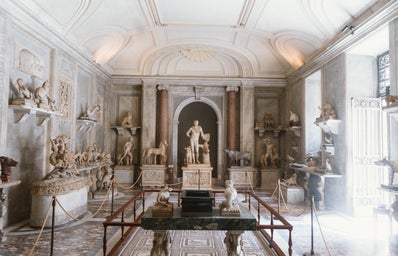From the timeless smile of the Mona Lisa, to the vibrant swirls of Starry Night, the world of Western art is known for its enduring beauty. In fact, many would consider these works to be some of the best of all time. But beneath some of the most iconic European art lies a history that deserves just as much attention. Let’s talk about it:
The Myth of the Noble Savage
Around the 15th century, many European countries started to travel across the globe in search of land, wealth, and knowledge. With the rise of the Ottoman Empire blocking several major seaports, Portuguese, Italian, and Spanish explorers were the first to set sail in search of new trade routes. As a result, they came in contact with African and Indigenous cultures that developed into an exploitative relationship. Throughout the 16th and 17th centuries, colonialism had taken root, altering economic, political, and social landscapes to this day. But perhaps lesser known is the impact colonization had on art. While there is a well-documented history of Europeans labeling foreign cultures as savage and primitive, a lesser-known but just as harmful stereotype developed alongside it: the Noble Savage. The Noble Savage represents a person of color who was seen as supposedly less “barbaric” than other members of their culture and instead led a simpler life that focused on nature rather than science and technology. The stereotype was coined in the works of Jean-Jacques Rousseau, an 18th-century French author who believed that humans should strive not for modernism, but for a deeper connection with nature and a blissful unawareness, as he believed “noble savages” did. While this archetype constituted early forms of Romantic literature, the underlying assumptions are anything but. In reality, technological advancements had shaped African and Indigenous cultures for hundreds of years. For example, in southern Africa during the 11th century, the 200-acre Great Zimbabwe stone wall was constructed without mortar, instead relying only on precisely carved stones for structural integrity. Several monoliths within the walls depict orbital patterns of Venus that are thought to have been used to predict eclipses, making Great Zimbabwe one of the first astronomical sites in the world. A few centuries later, the Incan Empire would emerge in Peru, creating advanced irrigation systems at Machu Picchu. Aqueducts were installed on the side of the mountains to collect runoff water which was then distributed to crop beds organized in a step shape to better control flooding. But despite these successes, European explorers still perpetuated racist stereotypes leading to an often misunderstood and forgotten story behind some of the most famous artworks.
European Appropriation
In the 19th century, the Noble Savage had become popular across Europe, sparking the interest of jaded artists in search of inspiration. One such artist, French painter Paul Gauguin, left for Tahiti in 1891 and created the first works of the so-called Primitivist movement. Gauguin’s works largely centered around young Indigenous women who he saw as sexually liberated and spiritually connected with nature. These women were often posed nude in natural scenery and painted in a style that reflected Gauguin’s romanticism, abandoning realism in favor of vibrant colors and looser forms. But while the scenery was praised for its lushness, the women in his paintings were subjected to the horrors of colonialism and exploitation. One of his most famous works, The Seed of the Areoi, features a 13-year-old girl who was pregnant with Gauguin’s child, serving as a grim reminder of the oppression African and Indigenous cultures were subjected to. A close friend of Gauguin, Picasso’s cubist era, was largely influenced by African masks that he viewed at an exhibition in Paris. While his style evolved more distinctly over the next few years, the features in his early cubist works borrowed heavily from African culture. For example, in one of his most famous cubist works, Les Demoiselles d’Avignon, the sharp lines and accentuated features closely resemble those of the Fang masks worn by the Gabon tribe. These masks served as religious or ceremonial tools often used to express coming of age, honor the dead, or celebrate heritage through storytelling. Unfortunately, however, no credit or reverence was given by the European artists who exploited these works for fame. Even today, recognition is scarce, and colonialization’s impact on art is rarely discussed in history classes. While some recent art historians have shed light on this problematic history, the only way to continually improve is to learn from the past and to bring attention to injustices long forgotten. To further explore this topic, here are some hyperlinked resources that delve deeper into some of the themes and art discussed:
Machu Picchu, Great Zimbabwe Wall, Primitivism and Cubism, Picasso and Appropriation, Gauguin and Exploitation, Noble Savage Stereotype

